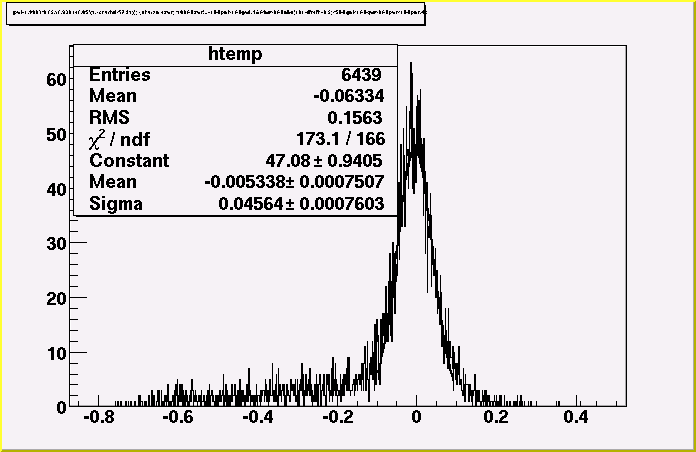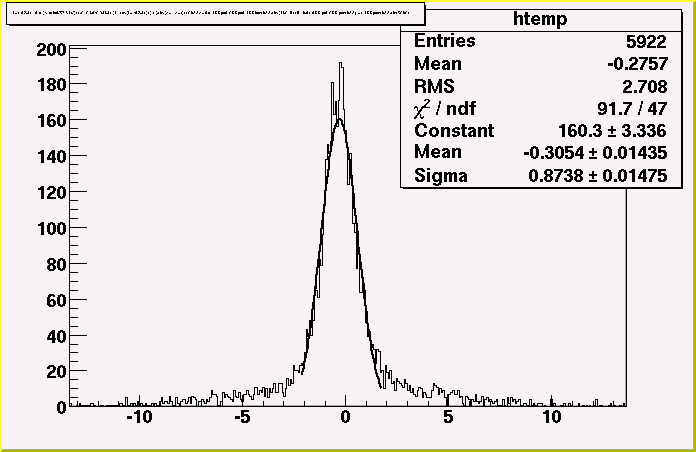I thought I'd follow up the discussion of today. To benchmark the
reconstruction accuracy in momentum/angles we use elastic events and
then - e.g.- relations such as
Ef - Ef_calc where Ef is the electron final energy and
Ef_calc = m_prot * E_0 / ( m_prot + E_0 * (1-cos(theta_e ) ) (1)
and,
thprot - thprot_calc where thprot is the proton (q) angle and
thprot_calc = atan( sin(theta_e)/( (1.0+E_0/m_prot)*(1.-cos(theta_e) ) ) (2)
Now, the calc variables use the beam energy (taken as a given) but at least
one other reconstructed variable, which has an uncertainty that will contribute
to the resulting Ef-Ef_calc distribution (e.g.). Clearly, in that case, I need
to know the uncertainty in Ef_calc before determining the accuracy in the
(reconstructed) E_f.
I've attached my distribution of (1), (2) of newton fit results taken from
a simple elastic analysis (target cut, coplanarity). The sigma values are
in MeV and deg.
>From (2) I assume that delta_thetaproton = delta_theta_e, I take the
gradient of theta_proton w.r.t. theta_e (0.8) I add in quadrature to get
delta_theta_prot = delta_theta_e = 0.8738 / sqrt(1.6) deg = 11 mrad
Then I likewise take the gradient of Ef w.r.t theta_el (5 MeV/deg at some 28 deg
kinematics) I add and subtract in quadrature. The effect is small, we are left
with an accuracy of 45 MeV for a (most probable) electron energy of 775 MeV
=> delta_p / p = 5.8 %
---------------------
. These number keep on improving at every pass, we are factors 3-4 away from
the design values
.. We understand we need: final t0, wire position offsets, the measured mag
field data, we may possibly still not select the best tracks, we have no
energy loss corrections (the latter is further down the road)
... The numbers above are a quick and dirty estimate.
_ The gradients change over the acceptance, it is better to
determine them analytically
_ Of course you do not need to assume that the accuracy in
theta_e/theta_prot is the same but rather should also
write down and solve for theta_el=theta_el(theta_proton)
.... Unfortunately z is not a kinematical quantity so it will be hard
to estimate with these methods the vertex reconstruction accuracy
________________________________________________________________________________
Tancredi Botto, phone: +1-617-253-9204 mobile: +1-978-490-4124
research scientist MIT/Bates, 21 Manning Av Middleton MA, 01949
^^^^^^^^^^^^^^^^^^^^^^^^^^^^^^^^^^^^^^^^^^^^^^^^^^^^^^^^^^^^^^^^^^^^^^^^^^^^^^^^


This archive was generated by hypermail 2.1.2 : Mon Feb 24 2014 - 14:07:29 EST